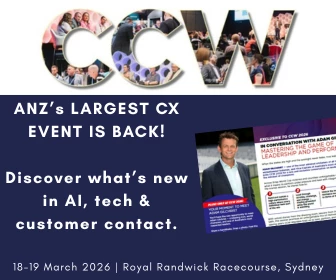Customer Relationship Management Guru James Taylor Talks 'Smart (Enough) Systems'
Add bookmark
Customer relationship management guru James Taylor is the author of Smart (Enough) Systems and a frequent speaker on enterprise decision management. In an interview with Call Center IQ's Blake Landau, Taylor discusses the importance of customer relationship management in the current economic crisis and why the customer relationship management systems most organizations rely on are just not very smart.
In today’s economic crisis, marketing budgets are tight. This economic reality, coupled with an increasing demand for customer value, has marketers fighting over budgets. Are marketing dollars best spent on customer creation or the optimization of current customer relationships?
While both are important, I think optimizing current customers wins this one. It’s generally easier and cheaper to get more value from an existing customer than to find a new one, and the current economic climate will likely make this more evident than ever before.
I also think that companies can create much more competitive separation with current customers. After all, when competing for new customers, everyone is even. When optimizing your current customers, however, you have a huge advantage—data.
All that data you have on your customers and their prior behavior can and should be put to work in treating your customers more appropriately, targeting customers more accurately and retaining customers for increased profitability. Your competitors don’t have this customer data making every time you put it to work effectively a competitive advantage.
You recently wrote about the "art and science of better." What does this mean in the world of customer relationship management?
It’s a phrase that builds on the catch phrase of an Operations Research group (INFORMS) that sometimes talks about "the science of better." The speaker I quoted wanted to point out that using analytics is not a purely mechanical "science" but also contains a fair amount of art.
The customer relationship management algorithms and tools are mathematical and deterministic. But predicting what customer relationship management information you need to make a given decision and the business implications of a particular prediction might help you gather the data you need. This data will help you try a different approach and is more of an art. Putting predictive analytics to work to make businesses more effective is part science, part art.
How do elements of decision management contribute to more effective customer retention decisions?
Customer retention decisions must reflect company policy, regulations and best practices learned from experience. Decision management uses business rules technology as the foundation for automating decisions and this allows all kinds of rules to be pulled together and managed coherently.
Because business rules are easier to manage and to edit than traditional code or scripting languages, business experts can be directly involved in maintaining these rules. This increases their accuracy and reduces the time it takes to make changes when regulations, the market or competitors force a change.
Customer retention is one of the most productive areas for data mining and predictive analytics. In pursuit of effective customer relationship management, using historical data to predict which customers are retention risks, and how likely they are to respond to various offers, and how likely they are to be profitable if they accept a particular offer can dramatically improve the effectiveness of retention. Decision management puts these analytic insights to work directly in the individual customer retention decision to maximize their effectiveness.
Decision management also ensures cross-channel consistency (by externalizing and managing customer retention decisions independent of the systems that support each channel) and supports experimentation (through champion/challenger or test-and-learn approaches).
In your book Smart (Enough) Systems, you talk about how computer-based systems most organizations rely on to support their businesses are not very smart. What do you mean by this?
Most of the information systems companies use let users type in data, store this data in a database and then, if you ask nicely, regurgitate that data for you in a report. All the decision making—the hard work—is done by people. These systems tend to be passive (they wait for a user before they do anything) and they don’t learn—no matter how much data you store in them they never learn from it. They handle, create, update, read and delete and not much else. These are dumb systems.
In contrast, smart (enough) systems act intelligently on behalf of the company and the users, making more of the decisions that drive transactions and customer interactions. This does not require some kind of just-out-of-the-labs artificial intelligence, just the practical application of business rules and analytic technology to the automation of operational decisions.
What is the number one piece of advice you have for marketers struggling in the economic downturn?
Use the customer data you have to make better decisions about customer treatments and customer relationship management. Identify the decisions that affect your customers, think about who makes them and how they are made. Figure out how to make them better.
For more of James Taylor’s thought leadership please visit his blog at www.jtonedm.com.
Interview by Blake Landau








